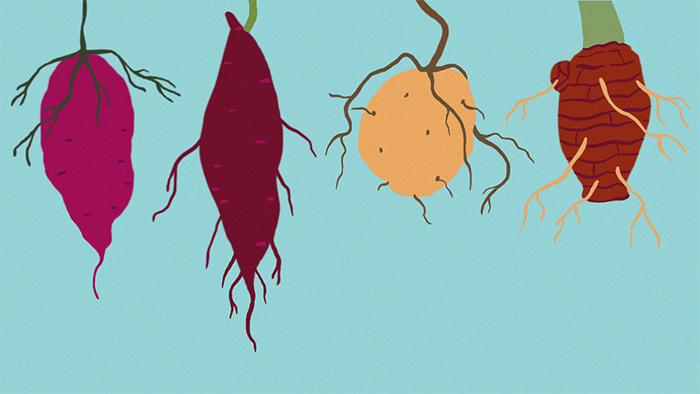You’ve probably gotten the hang of doing your grocery shopping online. With the increase in prices and the decline of food supply, it’s good to explore other healthy food options available in the market. Out of the many products available in the market today, one food staple that is often overlooked are root crops.
Root crops are inexpensive and easy to cook. They can be stored up to a week or two with proper storage in natural fiber baskets at room temperature (not inside the refrigerator) to preserve flavor and nutrients. They can also be primary substitutes for cereals because of their rich carbohydrate content, meeting the right food and nutritional requirement especially for marginalized groups. On top of that, they play an important role in food security and in the maintenance of the food supply chain because of their abundance and accessibility.
Here are some of the common root crops found in the country, their nutritional values as well as ways on how these can be cooked and how to properly store them.
Cassava
According to the Food and Agriculture Organization of the United Nations, cassava is now the 21st century crop because of its contribution to global economic development and in alleviating hunger and poverty. Also known as kamoteng-kahoy or balighoy, cassava is often used as an ingredient in snacks like bibingka, pichi-pichi, suman and cassava cake. This root crop can also be added to vegetable soups and stews for added flavor and texture. Its roots are rich in carbohydrates while its leaves contain protein, iron, calcium and vitamins A and C. Cassava can be preserved by peeling off the skin then freezing for future use.
Sweet potato
This starchy root crop is usually boiled, steamed or baked with the skin on as a snack or fried with sugar coating. This can also be used as an ingredient for lumpiang gulay, garnishing asado and menudo and even sweetened for halo-halo. If you’re feeling a little adventurous, you can try experimenting by making a sweet potato-filled pasta dish inspired by Wildflour or a tasty low fat soup. Babies can even enjoy eating this because of its soft texture and can also be a source of fiber, protein, vitamins and minerals.
Root crops also play an important role in food security and in the maintenance of the food supply chain because of their abundance and accessibility.
Potato
This is one of the most abundant crops found in the Cordillera region particularly in Benguet and Mountain Province. This is a highly valued crop because of its adaptability and versatility to all kinds of recipes and ways of cooking such as baking, boiling and frying. Unlike other root crops, it can be eaten with its skin on, making it more nutritious than it already is. Potatoes should be stored in a dark, dry, well-ventilated and cool place since sunlight can cause greening and growth of hair.
Taro
Yes, this is the same milk tea flavor that people love to order. Also known as gabi, this can be cooked just like potatoes—roasted on hot stone, baked in a ground oven and boiled with seasoned salt and garlic. Its leaves are often used in cooking laing, a spicy Bicolano dish with coconut milk, seasoned with bagoong and red hot chillies. Store them like potatoes so they can remain fresh for several weeks.
Yam
Purple yam or ube is the one of the most popular root crops in the country because of the dessert of the same name. It’s also been used as a popular flavor for several desserts like ice cream, champorado and latte. It’s sugary and sweeter than sweet potato and also relatively bigger. It can be boiled, baked and blended as a refreshing drink. Out of all the root crops mentioned, yam has the longest shelf life: up to six months without storing in a refrigerator.





